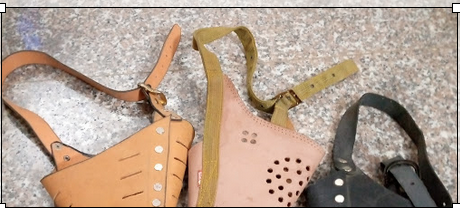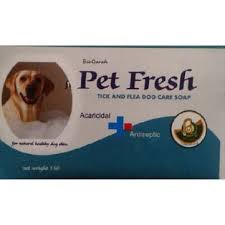Your cart is currently empty!
Dog Mouth Guard
Dog Mouth Guard Dog Mouth Guard: To most people, muzzles provoke images of lunging and snarling aggressive dogs. Its unfortunate and unfair that the stigma associated with a dog wearing a muzzle is that the dog must be dangerous. Personally when I see a dog wearing a properly fitted muzzle I feel reassured that their […]
Description
Dog Mouth Guard
Dog Mouth Guard: To most people, muzzles provoke images of lunging and snarling aggressive dogs. Its unfortunate and unfair that the stigma associated with a dog wearing a muzzle is that the dog must be dangerous. Personally when I see a dog wearing a properly fitted muzzle I feel reassured that their owner is being responsible and keeping their dog and the public safe. There are many reasons a dog may be wearing a muzzle: the dog may be recovering from a painful injury, the dog may get nervous around strange people or dogs or in some cities/states there are breed specific laws requiring it regardless of the dogs history.
Be Proactive
Dont wait until you NEED your dog to wear a muzzle. Start conditioning your dog to wearing a muzzle as early as possible. Maybe you have a dog that gets anxious at the vet. Training your dog to wear a muzzle can help lower the tension in the exam room for both the humans and your dog because no one is worrying about getting bit. Even the friendliest dog may bite when injured and in pain. We never want to think about an emergency happening to our dog but its best to be prepared just in case. Part of preparing a doggy first aid kit is to have a properly fitted muzzle for your dog and to condition your dog to happily wearing it. Some dogs absolutely hate having their nails trimmed. Your groomer will thank you for bringing them a dog who will happily wear a muzzle while they groom your dog so they can keep all their fingers and toes.
If you have a dog who has shown any aggression towards people or dogs, now is the time to start conditioning the muzzle. Prevent a bite before it happens. A dog with a bite record is a serious thing and can spell disaster not only for you from a liability standpoint but also for your dog as they can be declared a dangerous dog which can have deadly consequences. Work with an experienced trainer to come up with a training plan in addition to your muzzle conditioning.
Using a muzzle can allow you to work on behavior modification with your dog. Whether the issue is human or dog aggression or fearful behavior, your first priority should be the safety of everyone involved.
Be Responsible When Using Dog Mouth Guard
If your dog already has a bite history, whether with people or dogs, your first step should be muzzle conditioning your dog. Seek help from an experienced trainer to come up with a behavior modification and training plan. Muzzling your dog should not be used in place of training. A muzzle will only prevent your dog being able to bite; but a dog wearing a muzzle can still cause injury.
Muzzles should NOT be used for things like stopping your dog from barking, chewing, or eating things off the ground or for a puppy who is play biting. Work with a trainer for tips on how to deal with those issues.
Things to remember when using a muzzle:
- Proper fit of the muzzle is very important! Make sure you purchase the right size and style muzzle for your dog. It should be well-fitted and comfortable for your dog, allowing for panting and ideally drinking water and eating treats. Contact the manufacturer directly for assistance in sizing your dog. I recommend using a basket type muzzle such as Jafco or Baskerville brand muzzles.
- Create a positive association with your dog to their muzzle. Go slow and introduce it in a fun way. Make it a game! Its Party Hat time!
- Mesh muzzles aka grooming muzzles should not be used except for extremely short periods of time or in an emergency. These muzzles work by holding the dogs mouth closed which prevents panting and can cause a dog to overheat quickly especially in a stressful situation.
- Always use a muzzle in combination with training. Muzzles are not a replacement for addressing the issues your dog is having. Finding an experienced trainer and working with them to help your dog is a must.
Steps to Muzzle Condition your dog:
- You will need some super duty high value treats like spray cheese, cooked chicken, hot dogs, etc. Sitting in a chair with your dog sitting in front of you, show the muzzle and give your dog a jackpot of treats. Put the muzzle away (behind your back) and stop giving treats. Continue showing your dog the muzzle and treating until your dog looks excitedly for a treat when he sees the muzzle. Your goal is to make the muzzle a good thing.
- Put a few treats or spread some peanut butter/spray cheese inside the muzzle and let your dog eat/lick it out of the muzzle. When the muzzle has been licked clean, put more treats/cheese in the muzzle and repeat.
- You can add a verbal cue like muzzle or my favorite party hat immediately before your dog puts his nose in the muzzle to eat the treats. Encourage your dog to keep his nose in the muzzle by feeding more treats through the muzzle, increasing the length of time over several sessions that he holds his nose in the muzzle before treating. When your dog is happily pushing his nose into the muzzle on your verbal cue, continue to the next step.
- As your dog is licking the muzzle clean and you are feeding treats through the muzzle, gently secure the strap for a brief moment and then remove the strap. Gradually leave the straps secured for longer: 15 seconds, 30 seconds, 1 minute, 3 minutes, etc.
- Remember to keep sessions short initially. Multiple, short sessions each day is ideal. Gradually increase the time your dog wears the muzzle, building up to wearing the muzzle for 15-20 minutes at home before using the muzzle for training or in stressful situations.



